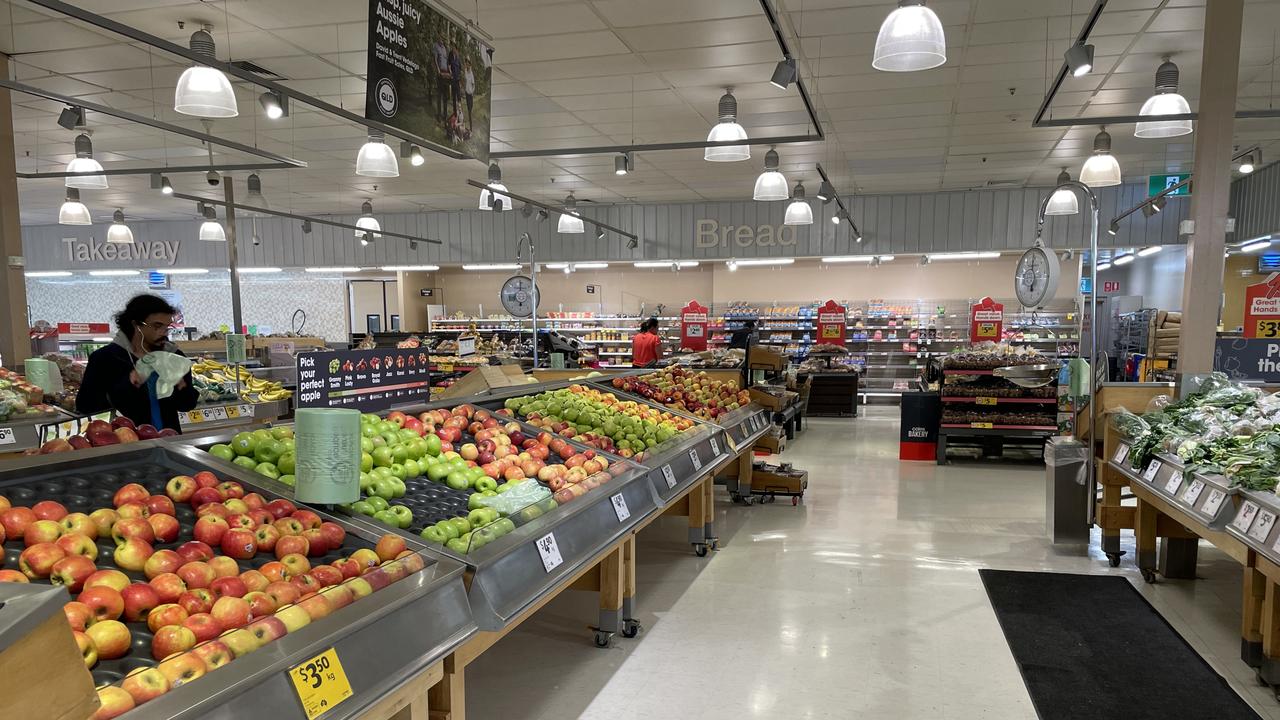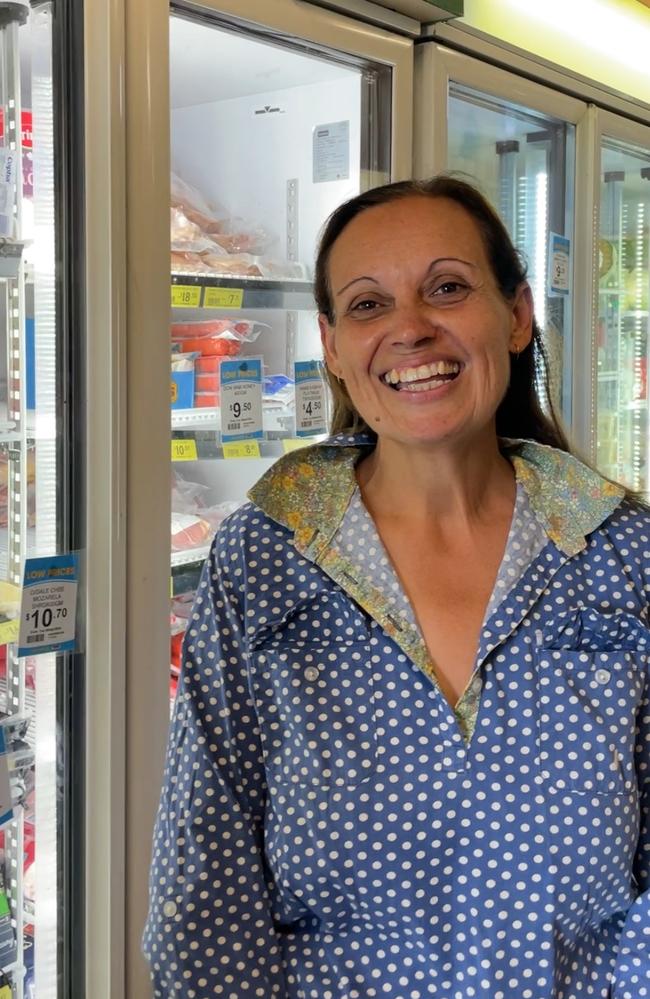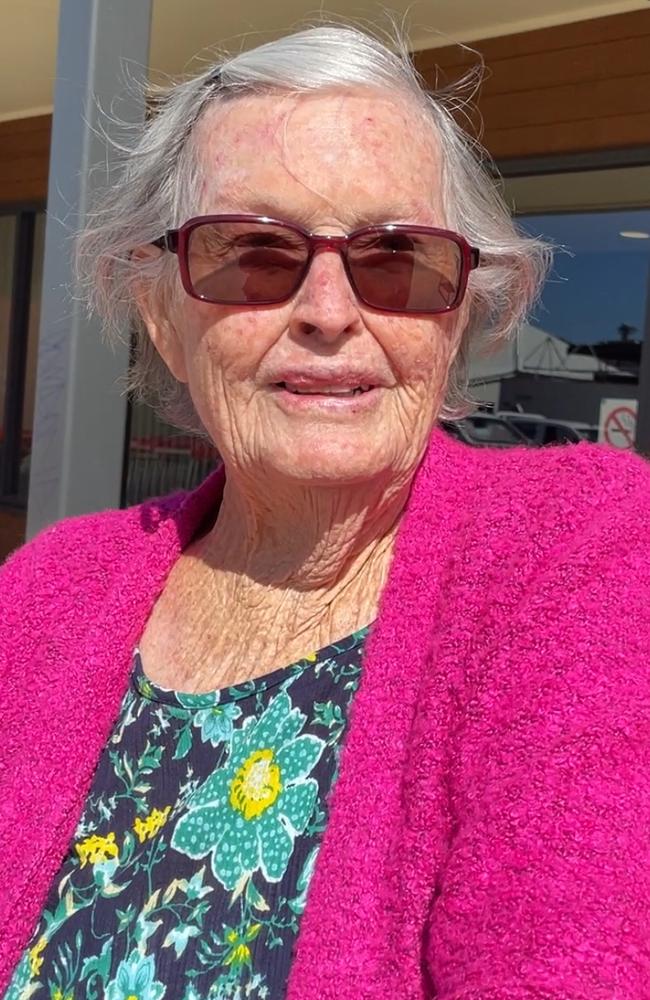Rural communities in South West Queensland struggling with increased cost of living with grocery prices revealed
In rural communities, the increasing cost of living is reaching crisis point, with many residents beginning to make tough choices. See how much more their grocery bills are compared to those living in the city.

Charleville
Don't miss out on the headlines from Charleville. Followed categories will be added to My News.
Cost-of-living pressures are crushing family budget and putting the pinch on businesses across southwest Queensland, as the tyranny of distance leads to higher grocery bills for those in the bush compared to the big smoke.
Analysis by News Corp can reveal just how much more people in Dalby, Roma, Warwick and western Queensland are paying compared to residents of larger communities such as Toowoomba.
The basket of goods was made up of 2L milk, a dozen eggs, bread, broccoli, tea, apples, dishwashing liquid, pasta, and tampons. The concept was to be able to buy each of the items for the cheapest possible price.
Choosing the cheapest item on the shelf does not necessarily equate to the best value for money, and also meant the goods varied slightly between stores across the region.
An employee at the St George Foodworks, who has lived in the small town of 1300 people 513km west of Brisbane her whole life, said she had noticed an increase in the price of goods, particularly in produce and meat.
“Sometimes a couple of dollars, sometimes more, but definitely a noticeable difference,” she said.
“I guess we have limited trucks coming out here, and limited options.”
Tiffany is a mother of two, living in St George.
“There’s a lot of price increases among seasonal fruit and vegetables,” Tiffany said.
“I used to live on the Sunshine Coast … and the price differences from there to here are insane.
“We obviously have to budget, watch our costs, and we go without some things to make room for the items that we do need each month – it can be a bit tight.”

Tiffany said increasing costs were particularly concerning in the southwest region, especially considering the role financial worry can play in perpetuating or catalysing mental health issues.
Another shopper at the St George IGA said he found fruit, vegetables and meat were all increasing in price, which had put pressure on his life.
“I’ve got four kids, you’ve gotta feed the kids. You know, you go without for them,” he said.
In Cunnamulla, Yvonne Brain is the owner and manager of the Friendly Grocer store.
Mrs Brain said she’s also definitely noticed an increase in prices of the goods she stocks.
“Just everything has gone up,” Mrs Brain said.

She said the price increases were most dramatic in times of flood and drought, which was when she said people were more likely to complain.
Mrs Brain said she thinks it’s a benefit to the Cunnamulla community that shoppers have the option to choose between her store, the IGA, and a corner store called Arkwright’s.
“We’re a small community, you’ve got to help one another out,” Mrs Brain said.
The Cunnamulla IGA is managed by Steph Mills, the owner’s daughter.
“From my point of view, your power has gone up, petrol has gone up, wages have gone up, rates have gone up, insurance has sure gone up,” Ms Mills said.
“It’s gotta be paid for one way or another or you don’t have a business.”
Ms Mills said a lengthy supply chain is part of the problem, especially when freight subsidies could be in jeopardy in the region.
Ms Mills said she has been trying to keep her prices down, but if freight prices were to continue rising, something would have to give.
“It’s not just one thing – it’s a snowball – everything has gone up.”
Murweh Shire mayor Shaun Radnedge is also advocating to ease cost of living pressures on his community, on many fronts.

Mr Radnedge said it’s not just about supermarket prices, but also about the exponential increases in insurance costs, which are forcing some residents to treat home insurance like a luxury, not a necessity.
“Cost of living is really starting to affect all these communities,” Mr Radnedge said.
Mr Radnedge said it’s affecting consumers, and it’s affecting small businesses.
“Power prices have just risen 40 per cent over the past 18 months,” he said.
Mr Radnedge said another big contributor is increasing insurance costs
“Some insurance premiums have gone up 300-400 per cent,” he said.
“To give you an example, I had one resident who went from $3500 to $13,500. Now that equates to roughly about $275 per week, just to pay for their insurance.
“It’s really getting out of hand, and this is where we need the state and federal governments to really buckle down on these insurance companies, and lets really have a look inside the matrix in which they price these insurance policies.”
As well as insurance premiums at a crisis point, Charleville residents really only have the option to shop at one store in town, an IGA.
Robert said he has seen price changes across the board, but they had been particularly pronounced in the past few months.
“Everyone notices increases in prices, but you’ve still got to live, you’ve still got to buy stuff so you carry on,” Robert said.
Robert said he thought that in Charleville, higher prices were partly attributable to a lack of competition.
“There’s general cost of living increases in grocery prices everywhere, but I think its certainly significantly higher here,” he said.
“I mean everyone’s costs are going up, or have gone up … but I think we’re getting a double dose here for no good reason.”
Bob, another Charleville resident, said he has also noticed an increase in supermarket prices. He said the most noticeable increase had been in the cost of dairy goods.
“Bread’s gone up quite a bit – just basic stuff,” Bob said.
Another Charleville shopper, said she has felt prices increase across the board.
“It means I don’t get as much time to go out and do fun things, because always at the end of the day I’m like ‘oh, I’ve gotta pay for my groceries’,” she said.
“There’s no room for savings, no matter how hard you work.
“You just kind of get stuck out here. You don’t get that chance to go into the city and get that break you need sometimes.”
She said it’s meant she’s postponed trips to Toowoomba, which she enjoyed doing as a younger person in Charleville.

Brett said he travels a lot throughout South West Queensland for work, and said he felt like things were getting more expensive across the board.
“It’s not really viable to say ‘I want to go to Woolworths,’ because that’s in Roma which is a three-hour drive,” Brett said.
“I think you’d have to do a pretty big shop to offset the cost of going that far to purchase groceries.”
Brett said that while he’s not certain people in the regions were being hit harder by the cost of living crisis in terms of dollar-amount increases, the broader context of life in the regions implied more serious effects of the changes.
“Predominantly there’s a lot of people out here that are already in quite difficult situations, so even if the actual changing cost of living was exactly the same, it might disproportionately affect people out here.”
Ian also said he definitely noticed changes in prices in supermarket goods.
“(It’s) made me be more careful on not wasting food,” Ian said.

“I think people are steering away from fresh foods and buying cheap, pre-made frozen meals and stuff like that.
“So, probably not a good thing for nutrition.”
In Roma, while there is a Woolworths, the only other supermarket is an IGA.
Jess, a mother of three in Roma, has lived in Roma for 12 years.
She said she has noticed a substantial change in the cost of living in the time she’s lived in Roma.
“Mostly with groceries we find,” Jess said.
“(There is) no competition, so they’re able to push the prices up.”
Jess said these changes across the board impacts her young family heavily.
“It’s very depressing to leave Woolies, when we’re paying between $500-600 per fortnight,” she said.
“It’s quite disheartening.
“I really need to start reassessing what I’m spending money on, and probably start to go without.”
Lola, an older woman who has lived in Roma for much of her life, and was a wheat producer years ago, said she felt very afflicted by the cost of living crisis.
“I live by myself, and I have family come some weekends, and it just costs a fortune to get food,” Lola said.

“I used to do a lot of cooking … a lot of tomato relish, pickles and mango chutney … I think those days are over now.”
Lola also said she thought the foodstuffs which were shipped to the regions were of a lesser quality than those stocked in city supermarkets.
“We only get second-hand stuff out here,” Lola said.
Lola said she felt it was unfair that people who lived in the regions seem to be hit harder by the cost of living crisis, given it is where many of the nation’s primary producers live.

George Ladbrook, owner of Ladbrook’s butchery in Roma, said the crisis was also impacting his business.
“We do source a bit locally, and a lot from away,” Mr Ladbrook said.
“The costs of small businesses has gone through the roof really.
“We haven’t got the turnover of big city shops and major supermarkets … but you’ve just gotta keep the costs down and do your best.”
Mr Ladbrook said at the end of the day, having small businesses in the community is essential.
“If you don’t look after the small businesses, donations to netball, and softball, and all that stuff wouldn’t happen.”
More Coverage
Originally published as Rural communities in South West Queensland struggling with increased cost of living with grocery prices revealed








